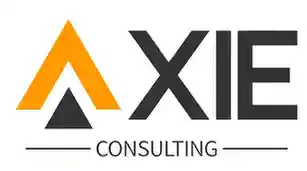
Best 3 Internal Developer Portals of 2025: Revolutionizing Developer Workflows
As we step into 2025, the landscape of software development continues to evolve at a rapid pace. One of the most significant advancements in this space is the rise of internal developer portals (IDPs). These platforms have become indispensable tools for organizations aiming to streamline workflows, enhance collaboration, and boost developer productivity. In this blog post, we’ll explore the top three internal developer portals of 2025 that are setting new standards in the industry.
What is an Internal Developer Portal?
Before diving into the specifics, let’s briefly touch on what an internal developer portal is. An IDP is a centralized platform that provides developers with everything they need to build, deploy, and maintain software. Think of it as a one-stop shop where developers can access documentation, APIs, tools, services, best practices, and deployment pipelines. By eliminating reliance on manual processes and slow-moving communication, IDPs empower developers to work more efficiently and focus on what they do best—building robust applications.
1. CodeSphere: The All-in-One Developer Hub
CodeSphere has emerged as a frontrunner in the world of internal developer portals. This platform is designed to cater to the diverse needs of modern development teams, offering a comprehensive suite of tools and features that streamline every aspect of the software development lifecycle.
Key Features of CodeSphere
Unified Service Catalog: CodeSphere’s service catalog is a game-changer. It provides detailed information about all existing services, including their purpose, technical specifications, ownership, dependencies, and current status. This allows developers to quickly understand the technological landscape and make informed decisions.
Self-Service Infrastructure Provisioning: With CodeSphere, developers can request and configure development environments, databases, and other resources without waiting for manual approvals. This capability significantly accelerates development cycles and reduces administrative overhead.
Integrated Documentation and Knowledge Management: CodeSphere goes beyond static wikis by offering dynamic, interconnected documentation that evolves with the software ecosystem. This includes automatic API documentation generation, version tracking, and contextual guidance.
Advanced Monitoring and Observability: The platform’s monitoring capabilities allow developers to track the health and performance of services. Features include metrics visualization, log aggregation, trace analysis, and intelligent alerting mechanisms that help teams identify and address potential issues.
Streamlined Workflow Automation: CodeSphere enables teams to create, manage, and optimize complex development pipelines. From continuous integration and continuous deployment (CI/CD) configurations to automated testing and security scanning, these capabilities ensure consistent and reliable software delivery.
2. DevFlow: The Collaborative Powerhouse
DevFlow is another standout internal developer portal that has gained significant traction in 2025. Known for its emphasis on collaboration and transparency, DevFlow is designed to bridge the gap between development, operations, and infrastructure teams.
Key Features of DevFlow
Unified Interface for Multi-Cloud Environments: DevFlow provides a unified interface for managing complex, multi-cloud environments. This allows teams to provision, configure, and monitor resources across different cloud providers and on-premises infrastructure seamlessly.
Infrastructure-as-Code (IaC) Principles: DevFlow’s emphasis on IaC ensures consistency, reproducibility, and version control of infrastructure configurations. This approach reduces configuration drift and enhances overall system reliability.
Continuous Delivery Capabilities: The platform offers robust pipeline management tools that support various deployment scenarios, including multi-stage releases, canary deployments, and sophisticated rollback mechanisms. This provides development teams with unprecedented flexibility and control over their software delivery processes.
Security and Compliance Integration: DevFlow integrates comprehensive security scanning, compliance checking, and governance frameworks directly into the development workflow. This proactive approach ensures that security considerations are an integral part of the development process.
3. NexusPortal: The Customizable Developer Experience
NexusPortal rounds out our list of the top internal developer portals of 2025. Built on a cloud-native architecture, NexusPortal focuses on simplicity, extensibility, and rapid value delivery. Its plugin-based architecture allows for unprecedented customization, making it a favorite among organizations with unique technological ecosystems.
Key Features of NexusPortal
Plugin-Based Architecture: NexusPortal’s plugin-based architecture allows organizations to build a developer portal that matches their specific needs. Developers can integrate various tools, services, and workflows through a plugin system, ensuring a tailored experience.
Interactive Service Catalog: The platform’s service catalog goes beyond static documentation, offering interactive, context-aware service information. This helps developers understand complex system relationships, dependencies, and operational status at a glance.
Developer-Centric Design: NexusPortal prioritizes ease of use without compromising on advanced capabilities. From self-service infrastructure provisioning to sophisticated workflow automation, the platform offers intuitive, user-friendly interfaces that make complex technological interactions feel simple and straightforward.
Software Lifecycle Management: NexusPortal provides comprehensive tools for tracking software health, managing technical debt, and ensuring long-term system maintainability. By offering insights into service performance, dependency management, and potential improvement areas, the platform supports continuous technological evolution.
Key Features That Define Exceptional Internal Developer Portals
The most effective internal developer portals share a set of core features that address the multifaceted needs of modern software development teams. These include:
Comprehensive Service Catalog: A robust service catalog serves as the backbone of an internal developer portal, providing detailed information about all existing services.
Self-Service Infrastructure Provisioning: Modern developer portals give teams self-service capabilities for infrastructure provisioning, significantly accelerating development cycles.
Integrated Documentation and Knowledge Management: Dynamic, interconnected documentation that evolves with the software ecosystem is crucial for effective knowledge management.
Advanced Monitoring and Observability: Monitoring capabilities allow developers to track the health and performance of services, helping teams identify and address potential issues.
Streamlined Workflow Automation: Workflow automation features enable teams to create, manage, and optimize complex development pipelines, ensuring consistent and reliable software delivery.
The Future of Software Development
As technological landscapes continue to evolve, internal developer portals will play an increasingly important role in organizations. They represent more than just technological solutions—they are catalysts for transformation, fostering collaboration, innovation, and continuous improvement.
The future of software development is collaborative, transparent, and increasingly automated. Internal developer portals are at the forefront of this transformation, enabling teams to achieve new levels of efficiency, creativity, and excellence.
In conclusion, the top three internal developer portals of 2025—CodeSphere, DevFlow, and NexusPortal—are revolutionizing the way development teams operate. By offering comprehensive tools and features that streamline workflows, enhance collaboration, and boost productivity, these platforms are setting new standards in the industry. As we look ahead, it’s clear that internal developer portals will continue to play a pivotal role in shaping the future of software development.
